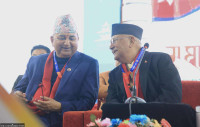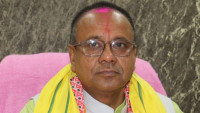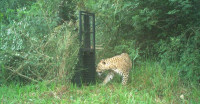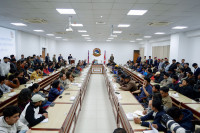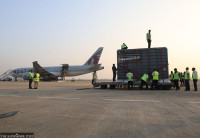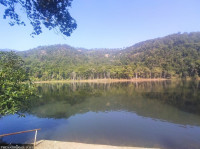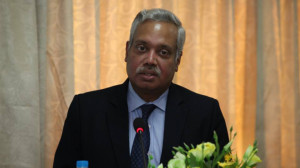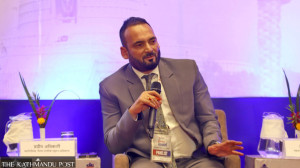National
A big draw: Bullfighting in Nuwakot village
Red clay dirt billows at Taruka village fairground when the two bulls— Kale and Supare, each weighing one and a half tonnes— lift their hindquarters in a state of agitation, ready to clash
Anup Ojha
The circular ground is fenced off with a rope, behind this demarcation are thousands of curious spectators, some squatting on a sloped knoll that hem the arena, others standing, and a few perched on bare tree branches. Cheers and hoots from the crowd muffle the voice of commentator coming out from the speaker system; the man on the mic is urging the people not to get too close to the ground.
Thus began the final bout (Kale Vs Supare) of the annual bullfighting match held in this Nuwakot village on the day of Maghe Sakranti on Thursday.
This year, 16 pairs of bull competed in the fight and Supare was named the winner.
Bishnu Shrestha, who had bought Supare for Rs 25,000 to compete in this annual event, went home with the prize money and the losing bull (Kale) as well.
Bullfighting in Taruka has gained popularity in the recent years; more people from outside the district are attending the event.
Ram Hari Neupane, one of the co-ordinators of the event, said until eight years ago, bullfighting matches were held in different parts of Nuwakot, but Taruka has become a major hub for the bullfighting these days. “We receive more people every year. We want to turn it into a grand sporting event since this is the only place in the country where you can see bullfighting match,” Neupane said.
People from different parts of the country, including Dhading, Rasuwa, Kathmandu, Lamjung and Chitwan, attended this year’s event.
“This is our first time. We wanted to witness this event after learning about it through media,” said Keshav Dhungana, who drove all the way from Lamjung with his daughter to see the match.
Among the crowd was US citizen, Kevin Paschaoo. “I have seen bullfighting in Spain, but this fight is fairer,” he said. “Because man fighting a bull is unfair, and the bullfighting here is not violent.”
Nawaraj Pandit, a local said, the annual festival has also become an excuse for many youths working outside the district and the country to return home.
“Most of us live in poverty here. A majority of the young population go to India and Gulf countries for jobs. They come back to celebrate this festival,” said Pandit, who himself had arrived from India recently for the festival.
Nepali bullfighting is believed to have been introduced in Taruka by Jaya Prithvi Bahadur Singh, a monarch of the ancient Bajhang Kingdom, more then 200 years ago.




 18.12°C Kathmandu
18.12°C Kathmandu.jpg)
